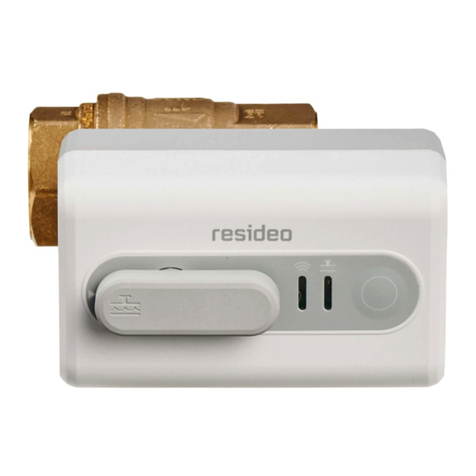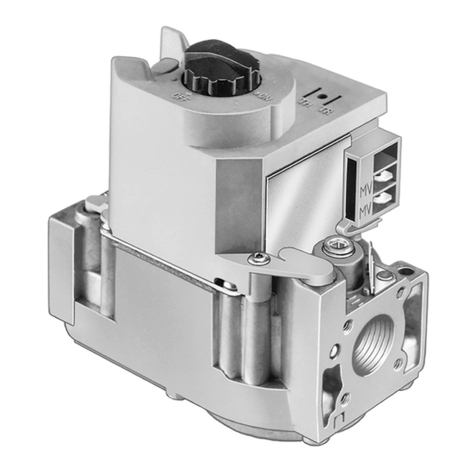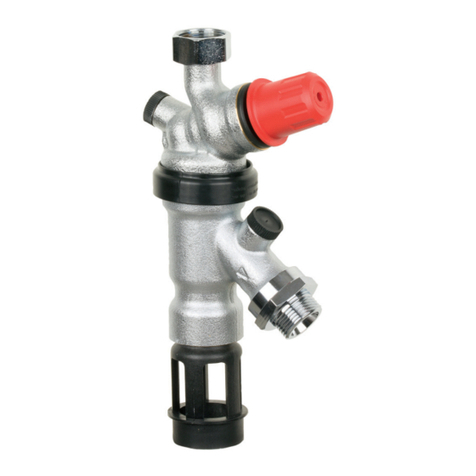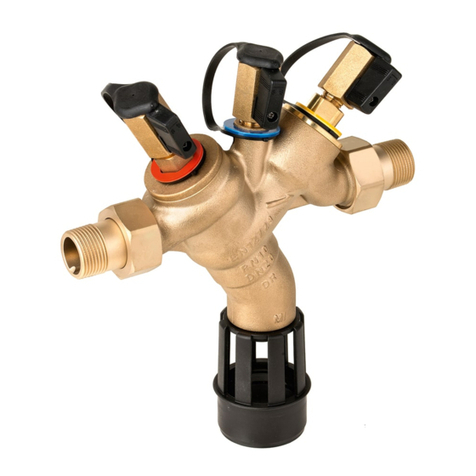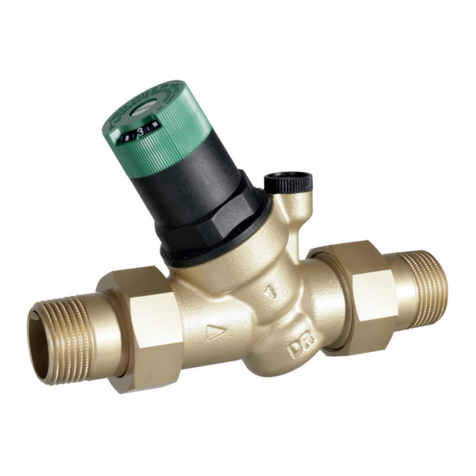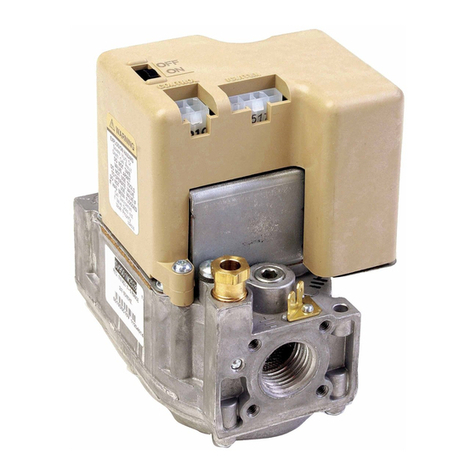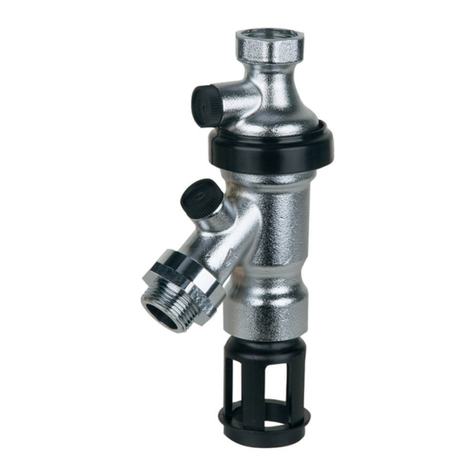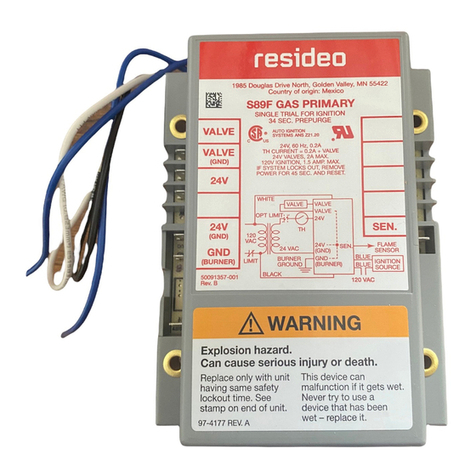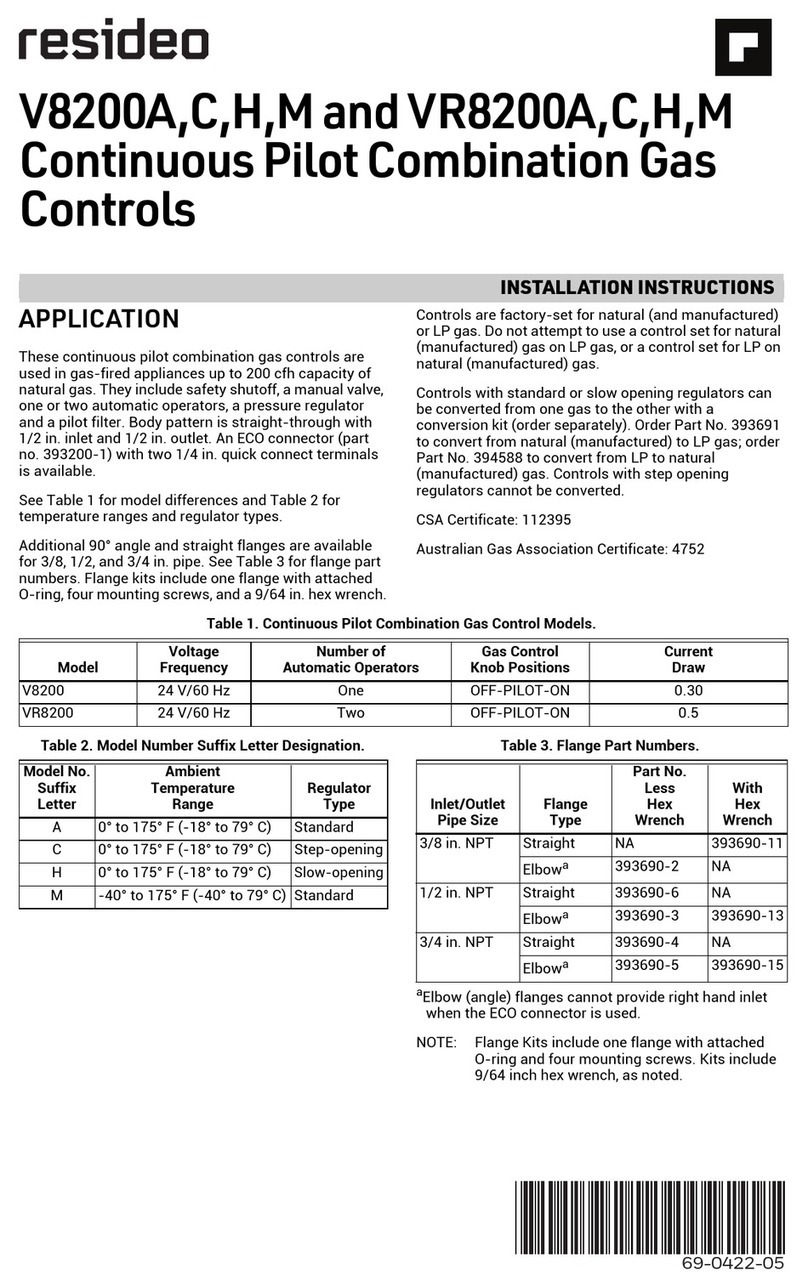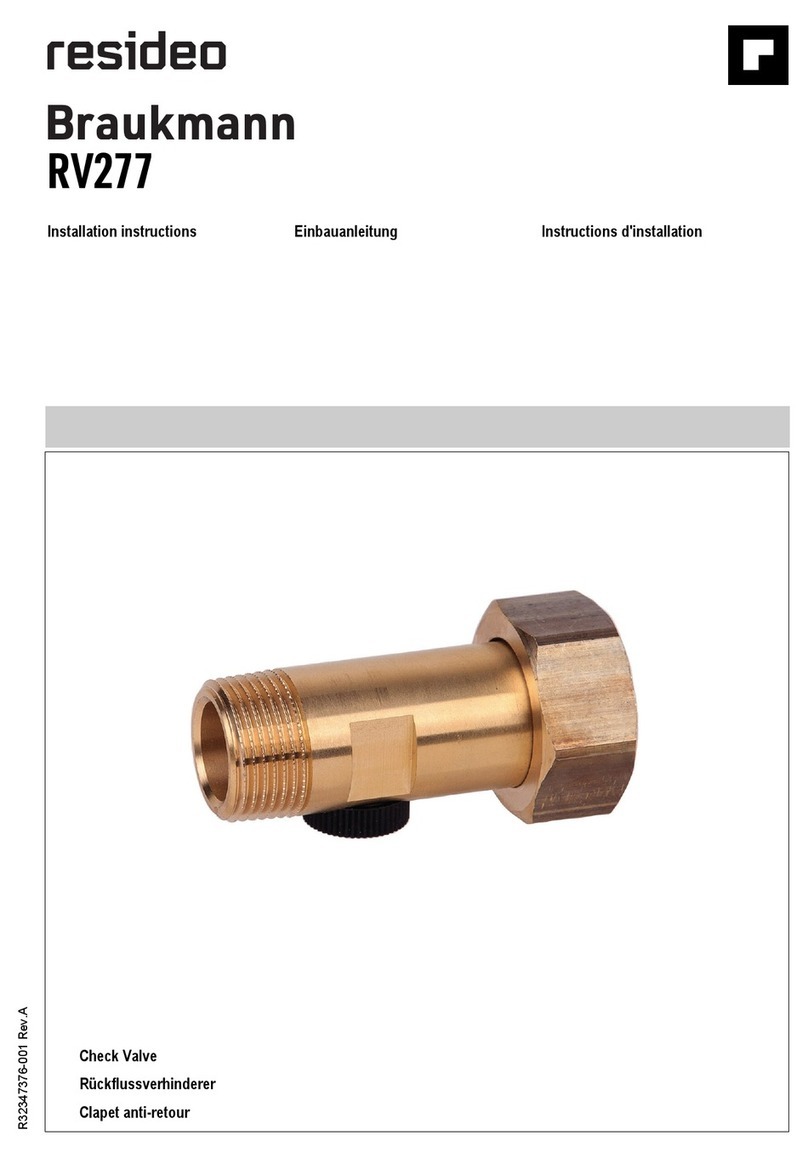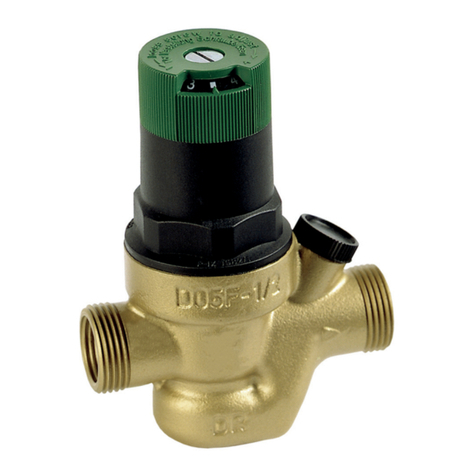
VR8300 CONTINUOUS PILOT COMBINATION GAS CONTROL
69-0668—05 8
MAINTENANCE
Fire or Explosion Hazard.
Can cause property damage, severe injury, or
death.
Improper cleaning or reassembly can cause gas
leakage. When cleaning, ensure that control is
reassembled properly and perform gas leak test.
Regular preventive maintenance is important in
applications that place a heavy load on system controls
such as in the commercial cooking and agricultural and
industrial industries because:
• In many such applications, particularly commercial
cooking, the equipment operates 100,000-200,000
cycles per year. Such heavy cycling can wear out the
gas control in one to two years.
• Exposure to water, dirt, chemicals and heat can
damage the gas control and shut down the control
system.
The maintenance program should include regular check-
out of the gas control as outlined in the Startup and
Checkout section, and the control system as described in
the appliance manufacturer literature.
Maintenance frequency must be determined individually
for each application. Some considerations are:
• Cycling frequency. Appliances that may cycle 100,000
times annually should be checked monthly.
• Intermittent use. Appliances that are used seasonally
should be checked before shutdown and again before
the next use.
• Consequence of unexpected shutdown. Where the
unexpected shutdown is costly, the system should be
checked more often.
• Dusty, wet, or corrosive environment. In these
environments the gas control can deteriorate more
rapidly so the system should be checked more often.
The gas control should be replaced if:
• It does not perform properly on checkout or trouble-
shooting.
• The gas control knob is hard to turn or push down, or
it fails to pop up when released.
• The gas control is likely to have operated for more
than 200,000 cycles.
SERVICE
Fire or Explosion Hazard.
Can cause property damage, severe injury or
death
Do not disassemble the gas control; it contains
no replaceable components. Attempted
disassembly or repair can damage the gas
control.
Hazardous voltage.
Improper installation can burn out thermostat
heat anticipator.
Do not apply a jumper across or short the valve
coil terminals.
IMPORTANT
Allow 60 seconds after shutdown before re-
energizing step-opening model to ensure light
off at step pressure.
If Pilot Burner Flame does not Light:
1. Make sure that the main gas supply valve is open
and the pilot gas supply line is purged of air.
2. Light the pilot burner flame following procedures in
Light the Pilot Burner Flame section. If pilot burner
flame does not light:
a. Check the pilot gas adjustment screw. If closed,
readjust the pilot flame. Refer to Adjust the
Pilot Burner Flame section.
b. Perform the Gas Leak Test at the compression
fitting. If a gas leak is detected, replace the old
compression fitting or tighten the newly
installed one. See Fig. 1.
c. Make sure that the pilot burner tubing or pilot
burner orifice is not clogged.
If Pilot Burner Flame Goes Out when
Gas Control Knob is Released:
1. Make sure the gas control knob is held in at least
one minute to allow the thermocouple time to heat.
2. Check the pilot burner flame adjustment. Refer to
Adjust the Pilot Burner Flame section.
3. Check the wiring between the thermocouple and
the gas control valve operator.
4. Make sure that the thermocouple connection to the
power unit is tightened 1/4 turn beyond finger
tight.
5. If pilot burner flame goes out, measure the open-
circuit thermocouple output voltage. Compare it to
the acceptable range charts in the thermocouple
specifications or in the Gas Controls Handbook.
Replace the thermocouple if voltages are outside
the acceptable range.
6. Check the power unit resistance. If it is above
11 ohms, replace the gas control.
If Main Burner does not Come on
with Call For Heat:
1. Make sure the gas control knob is in the ON posi-
tion.
2. Adjust the thermostat several degrees above the
room temperature.
3. Use an ac voltmeter to measure the voltage across
terminals TH and TR. If:
a. No voltage is present, check the control circuit
for proper operation.
b. 24 Vac is present, but first operator did not
click open, check for excessive inlet gas pres-
sure. If inlet gas pressure is correct, replace the
gas control.
4. Measure the closed thermocouple output voltages
and compare to the acceptable range charts in the
thermocouple specifications or in the Gas Controls
Handbook. Replace the thermocouple if voltages
are outside the acceptable range.
If Main Burner is Over firing:
Adjust the gas control pressure regulator to the correct
pressure. If the regulator cannot be adjusted and supply
pressure is in the normal range, replace the gas control.
